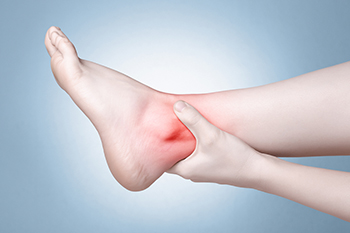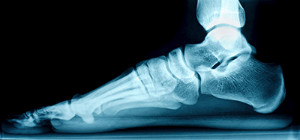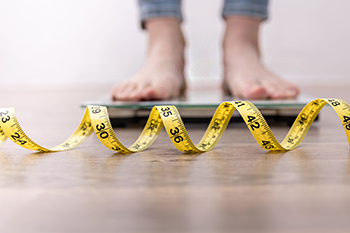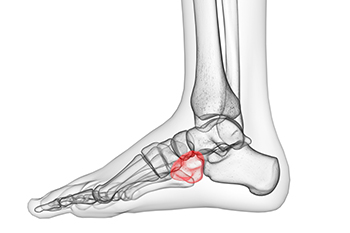
Fluid-filled ganglion cysts are benign masses that can develop in tissue surrounding a tendon as well as in other locations. Ganglion cysts in the feet can occur on top of the foot or in the ankle and are sometimes visible on the skin. If they press against a tendon, joint, or footwear, they can be painful. It is a good idea to have your podiatrist evaluate and diagnose any growth that is causing pain in your ankle or elsewhere on your feet whether or not you suspect a ganglion cyst. They will typically monitor the growth and may prescribe custom orthotics or footwear modifications to alleviate pressure being placed on it. If the cyst becomes overly painful or bothersome, your podiatrist may try aspirating it or using steroid injections to shrink it. A surgical treatment may prove beneficial if the cyst returns or is non-responsive to more conservative treatments.
Ankle pain can have many different causes and the pain may potentially be serious. If you have ankle pain, consult with one of our podiatrists from Canonsburg Podiatry Associates. Our doctors will assess your condition and provide you with quality foot and ankle treatment.
Ankle pain is any condition that causes pain in the ankle. Due to the fact that the ankle consists of tendons, muscles, bones, and ligaments, ankle pain can come from a number of different conditions.
Causes
The most common causes of ankle pain include:
- Types of arthritis (rheumatoid, osteoarthritis, and gout)
- Ankle sprains
- Broken ankles
- Achilles tendinitis
- Achilles tendon rupture
- Stress fractures
- Tarsal tunnel syndrome
- Plantar fasciitis
Symptoms
Symptoms of ankle injury vary based upon the condition. Pain may include general pain and discomfort, swelling, aching, redness, bruising, burning or stabbing sensations, and/or loss of sensation.
Diagnosis
Due to the wide variety of potential causes of ankle pain, podiatrists will utilize a number of different methods to properly diagnose ankle pain. This can include asking for personal and family medical histories and of any recent injuries. Further diagnosis may include sensation tests, a physical examination, and potentially x-rays or other imaging tests.
Treatment
Just as the range of causes varies widely, so do treatments. Some more common treatments are rest, ice packs, keeping pressure off the foot, orthotics and braces, medication for inflammation and pain, and surgery.
If you have any questions, please feel free to contact our office located in Canonsburg and McMurray, PA . We offer the newest diagnostic and treatment technologies for all your foot care needs.




